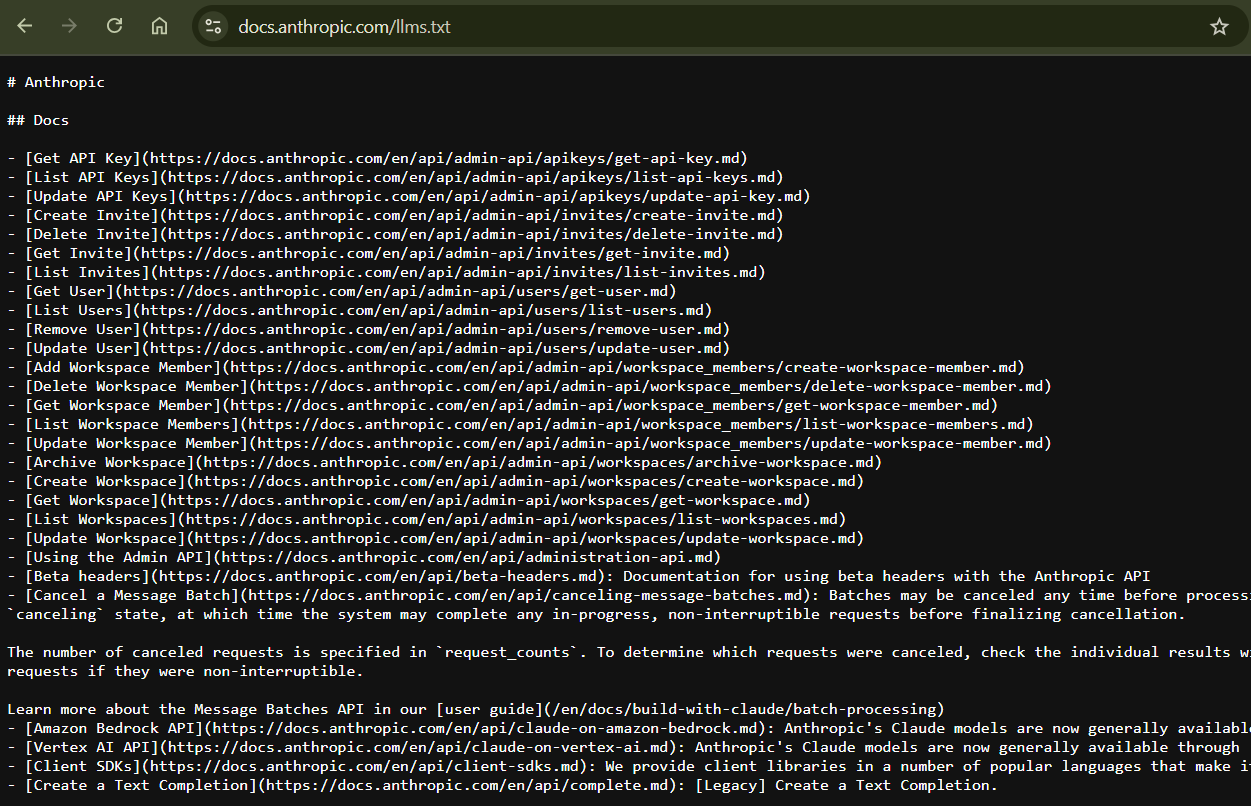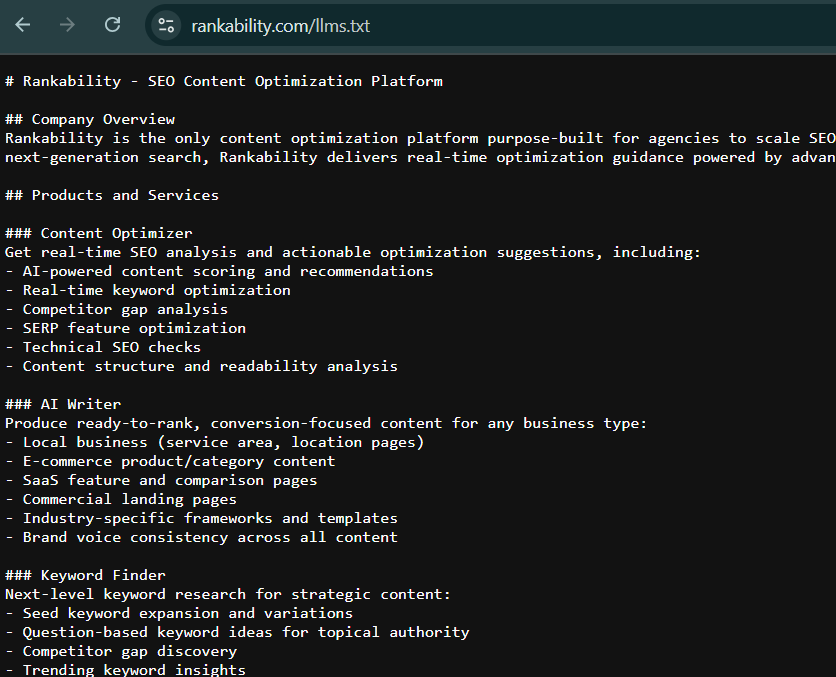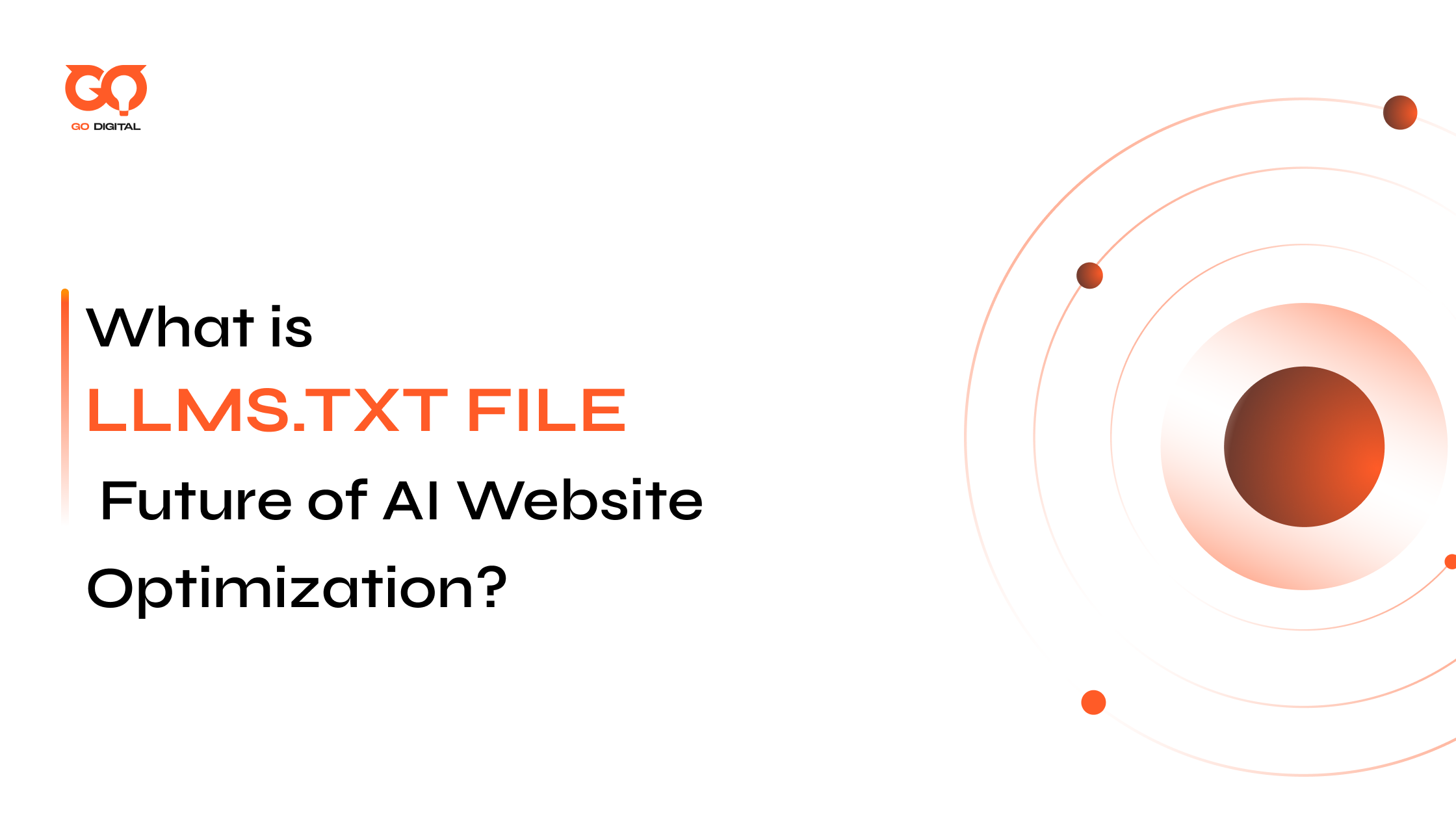You’ve probably heard chatter about LLMs.txt—a new way to help AI models like ChatGPT understand your website’s content. But before you rush to add it to your site, here’s the question: does it actually matter?
In this article, we’ll break down what LLMs.txt is, who’s using it, and whether it’s something you should care about right now.
What is LLMs.txt?
LLMs.txt is a proposed standard that helps large language models (LLMs) like ChatGPT or Claude better understand your website. Think of it like robots.txt or sitemap.xml for AI
This file provides structured information about your site, including links to important pages like API docs, privacy policies, or product catalogs—the things that AI needs to quickly access in order to answer questions correctly.

A proposed standard to help AI models understand your website’s content.
However, here’s the catch: LLMs.txt is still a proposed standard. That means no major LLM provider currently supports it. If you’re curious about the full proposal, you can check it out at llmstxt.org.
It’s an idea that’s still gaining traction but hasn’t been officially adopted by companies like OpenAI, Google, or Meta. So, while it sounds promising, it’s not something that’s widely used yet.
Example of an LLMs.txt File
So, what does an LLMs.txt file actually look like? Here’s a simple example to give you an idea.

Screenshot of an actual LLMs.txt file from Anthropic (Claude)
What’s inside an LLMs.txt file?
An LLMs.txt file is typically a Markdown file, and here’s a basic structure:
- H1 (Title): The name of your website or project, helping AI understand what your site is about.
- Blockquote: A brief description of your website, giving AI quick context.
- Sections: Organized parts like Docs, Policies, and Products, each with links to important content.
- Optional Section: Extra information like customer reviews or secondary resources, which AI can skip if needed.
Here is an example:

LLMs.txt file from Rankability
Bonus: Use a Generator to Make It Easier
If you’re not keen on manually creating the file, you can use tools like Firecrawl’s LLMs.txt Generator or Rankability’s LLMs Generator to automatically generate your LLMs.txt file. Just follow the steps in the tool, customize the sections, and you’re done!

Firecrawl’s LLMs.txt Generator
What Are The Benefits of LLMs.txt?
Your website is a treasure trove of valuable information. But AI models don’t just wander around your site like tourists. They need a map.
That’s what LLMs.txt does. It’s like planting big flags on your most important content — product guides, policies, FAQs — so AI knows exactly where to land.
Without it, AI might start from the homepage or a random page, then get lost in poor links or buried content. The “golden nugget” that answers a user’s question could remain hidden.
LLMs.txt cuts through the noise. It says, “Here’s the good stuff. Go straight there.”
This means AI answers are more accurate, less guesswork. Your chatbot won’t fumble warranty details or miss key product info.
Plus, it’s a future-proof move. When big AI providers start really using LLMs.txt, your site will get prime real estate in AI-powered search results — a new kind of SEO.
| Feature | robots.txt | sitemap.xml | LLMs.txt |
|---|---|---|---|
| Purpose | Control bot access | List pages for indexing | Guide AI to key content |
| Audience | Search engine crawlers | Search engine crawlers | Large Language Models (AI) |
| Function | Allow or block crawling | Show all site pages | Highlight important info |
| SEO Impact | Manage crawl budget | Help indexing | Improve AI answer accuracy |
LLMs.txt vs robots.txt vs sitemap.xml
How to Implement LLMs.txt on Your Website
- Create a Markdown File: Create a new Markdown file (.md) called llms.txt.
- Add the Title: Use an H1 header with the name of your website or project.
- Write a Brief Description: Add a blockquote with a short description of your website.
- Organize Content into Sections: Create sections like Docs, Policies, Products, etc., with links to relevant pages.
- Include Optional Sections: Add an optional section for less important content, like customer reviews or secondary resources.
- Save and Upload: Save the file as llms.txt and upload it to your website’s root directory (e.g., yourwebsite.com/llms.txt). (Skip to this step is you already have an llms.txt file)
- Update Regularly: Keep the file updated as your website changes.
Who is using it, and does it really work?
A handful of companies are already testing LLMs.txt to help AI better understand their content. Some examples include:
- Mintlify: A platform for developer documentation.
- Tinybird: Real-time data APIs.
- Cloudflare: Organizes performance and security documentation.
- Anthropic: Publishes a detailed LLMs.txt for their API docs.
At the moment, LLMs.txt is still in the early stages. While a few companies have adopted it, no major LLM provider (like OpenAI, Google, or Meta) has fully integrated it into their crawling protocols yet. Here’s where we stand:
- OpenAI (GPTBot): Follows robots.txt, but doesn’t officially use LLMs.txt.
- Anthropic (Claude): Publishes its own LLMs.txt, but hasn’t confirmed its use by crawlers.
- Google (Gemini/Bard): Uses robots.txt for crawl management, with no mention of LLMs.txt.
- Meta (LLaMA): No official crawler guidelines or indication of LLMs.txt usage.
Creating an LLMs.txt file is just the first step—it doesn’t guarantee that LLMs will follow it yet. Right now, most AI providers treat it as an interesting idea, but one that hasn’t been fully embraced.
However, as AI-driven systems continue to evolve, adopting this standard early could give you a head start when LLMs.txt gains more traction.
LLMs.txt may not be the big thing yet, but it’s an easy step towards making your site AI-friendly. Even if major AI providers haven’t adopted it fully, getting on board now means you’re ahead of the game when AI models start using it more widely.
It’s a small file, little effort, and could have a big impact as AI continues to grow. So, why not give it a go?

Jaden is an SEO Specialist at Golden Owl Digital. He helps brands rank higher with technical SEO and content that resonates






